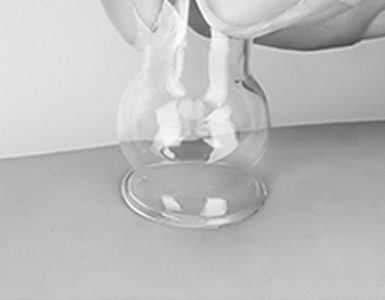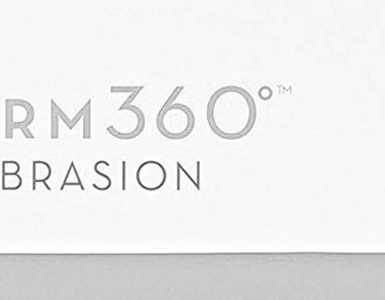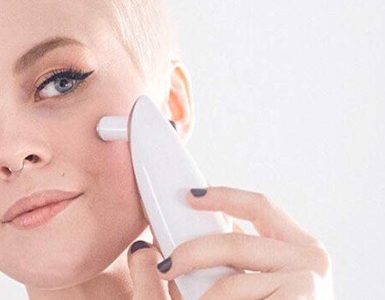What is dermabrasion and what is microdermabrasion?
Dermabrasion is a dermatological procedure, aiming to smooth the entire face or individual sections of the face. This is achieved through controlled surgical grinding of damaged facial skin. Dermabrasion “sands” using abrasive or planing action and makes it look younger. The procedure improves the skin contour and new, healthy skin replaces the treated skin.
Microdermabrasion is a method, helping restore the natural functions of the skin by eliminating the outermost skin layer, which is composed of dead skin cells and contaminants. The procedure is recommended for reviving darkened, dry and/or rough skin, for deep peeling, removing blemishes, fine lines, atrophic scars, and acne scars. These treatments also dramatically reduce pore size and control sebum production.

How are dermabrasion and microdermabrasion performed?
The eyelids and hair are covered during dermabrasion. Anesthesia for the treatment of the treated area follows. Medical professionals may suggest that you take a pain-reducing medication. Dermabrasion is performed by the controlled removal of the damaged skin of the face to provoke the restoration of a new layer of the skin without defects. Dermabrasion is a manipulation using rotating sterile diamond sanders or special brushes attached to rotating nozzles. Dermabrasion is considered a surgical procedure, performed in a medical center or a hospital.
Microdermabrasion, on the other hand, can be performed at your home (if you own a microdermabrasion machine, you can perform the procedure yourself) in an aesthetic salon or at a hospital, by a specialist dermatologist. Microdermabrasion procedure is not as aggressive as dermabrasion – it only removes the skin cells from the epidermal layer of dry, dead skin cells. A microdermabrasion machine buffs and polishes the skin using a stream of fine crystals or a diamond tip. Microdermabrasion systems often have a suction feature to vacuum the loose skin cells from the face.
Are the procedures painful?
Although there is bleeding, there is no severe pain during the dermabrasion procedure because local anesthetics are used to numb the skin before treatment. After the dermabrasion session, some patients report experiencing pain and discomfort, this is why pain relievers are usually prescribed for the pain. The post-procedure swelling can be successfully reduced with corticosteroids applied topically.
Microdermabrasion rarely provokes discomfort in patients. After a microdermabrasion session, the skin may be more sensitive, due to the exfoliation process but negative post-microdermabrasion symptoms disappear within a day or two.
What should I expect after dermabrasion vs microdermabrasion?
After a dermabrasion procedure, the treated area can be covered with medication and dressing. A few days after the procedure, the skin looks and feels scarred (as after a fall). From 24 to 48 hours after the procedure, a crust will form on the treated area.
The skin is usually swollen for a few days. Local anesthetics can be used to soothe discomfort. Sometimes, antibiotics may be needed to prevent possible infections.
Temporary redness is the usual post-treatment effect of microdermabrasion. People with more sensitive skin may experience burning sensation, which may last during the next 1-3 hours. However, negative skin reactions are rarely observed. Cosmetic products can be safely applied to the facial area right after the procedure. The application of sunscreen is recommended, as the skin becomes more sensitive to sunlight.
What is the recovery period after dermabrasion treatment and after a microdermabrasion session?
After a few days, the outermost skin layer begins to separate and fall off. The underlying skin is pink, but gradually begins to normalize its color after about three to six weeks. During this period, maintenance is done with special cleansers and cosmetics for sensitive skin. A few days after the procedure you will be able to resume your normal activity, although your skin will still be red and slightly sore. Usually, patients may return to work after two weeks to allow the skin to recover its normal appearance. Preventative measures, including not exposing your skin to direct sunlight are highly recommended.
In the first two weeks, you should avoid heavy physical exercise. Men should not shave during this period.
1 to 4 days are enough for your skin to completely recover after a microdermabrasion procedure. Most people immediately return to daily activity after a session, some even use their lunch break to visit their beauty studio.
What are the long-term effects of dermabrasion and microdermabrasion?
Dermabrasion can offer dramatic improvements for the skin texture and overall facial complexion. The result depends on the condition of the skin, the color, the depth of the wrinkles and other imperfections, as well as the individual healing capabilities of the patient.
Microdermabrasion provides subtle changes in skin color and texture. The procedure is indeed effective if you have minor scars or discolorations or if your goal is to enjoy a fresher-looking skin but it won’t change the appearance of deeper scars, stretch marks or wrinkles.
Who is the ideal candidate for a dermabrasion procedure?
• In good physical health.
• Psychologically balanced.
• Well informed about the procedure.
• Accepting the necessary restrictions after the procedure.
• Not having active acne
• Those who did not apply chemical peels did not experience severe sunburn or rank therapy
• With unexplained skin hypersensitivity and allergies
• Who have not used retinoids (Tigason, Roaccutane) in the previous year and a half.
• That can avoid exposure to sunlight for several weeks after the procedure
• Well-informed of possible results, following thhe procedure, especially regarding different skin colors and skin types (Light skin patients generally have better post-dermabrasion results than darker skin)
• With real expectations of the effect of the procedure.
The above are just a few of the criteria your doctor will consider to determine if dermabrasion procedure is right for you. Ask your doctor if you think you are the right candidate for this procedure.
Who is the ideal candidate for a microdermabrasion procedure?
• Relatively healthy (microdermabrasion rarely poses risks of infections)
• Patients with acne scars respond very well to microdermabrasion treatment
• People affected by fine lines and wrinkles, sun damage, uneven pigmentation, and minor scars are satisfied with the results obtained after 3 or 4 sessions





Add comment